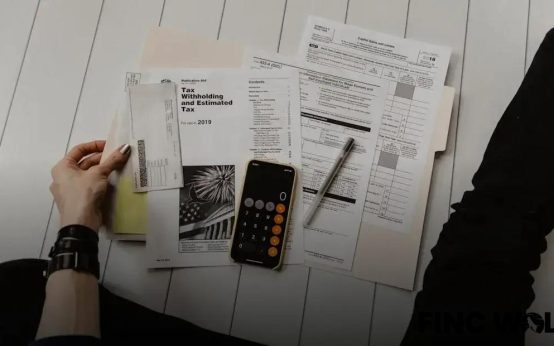In today’s inflationary economy, learning how to save more money has become essential. With costs rising, it’s important to develop effective strategies that protect your finances. This guide will explore the impact of inflation and provide practical tips for budgeting, shopping smarter, and investing wisely. Let’s begin by understanding how inflation affects your spending power and what you can do to mitigate its effects.
Understanding Inflation and Its Impact
Inflation is the rate at which the general level of prices for goods and services rises, eroding purchasing power. It affects how far money can stretch, making everyday expenses like groceries and transportation cost more. Understanding its impact is crucial for planning and saving money in challenging economic times.
Price Increases
As prices climb, purchasing power decreases. This requires adaptations in spending and saving habits. Monitoring price changes assists in identifying trends and anticipating financial adjustments.
Income vs. Inflation
Incomes may not always keep pace with inflation, stretching budgets even further. Paying attention to income growth relative to inflation rates can help identify potential challenges before they become problems.
Long-term Planning
In the long run, inflation can impact savings and investments, often diminishing returns. It’s essential to adjust saving strategies to hedge against inflation effectively. Regularly reviewing and adjusting financial goals ensures alignment with economic realities.
Effective Budgeting Techniques

One of the most crucial aspects of managing your finances during inflationary times is mastering effective budgeting techniques. A well-crafted budget helps you keep track of your income and expenses, allowing you to allocate your resources wisely. Start by listing out all your sources of income, followed by your monthly expenses, such as rent, groceries, utilities, and other necessities.
Once you have a clear understanding of your earnings and spendings, prioritize your needs over wants. It is essential to cut down on discretionary spending and focus on necessary areas. For example, dining out often could be swapped with home-cooked meals, thus saving significant amounts monthly.
Use Budgeting Tools
Leverage technology by using budgeting apps that offer comprehensive tracking features. These apps can automatically categorize your expenses and provide insights into your spending habits, further helping you adjust your budget accordingly. They send alerts when you’re nearing your limits, ensuring you stay on track.
Another crucial tactic is the 50/30/20 rule, a straightforward budgeting strategy. Allocate 50% of your income to needs, 30% to wants, and 20% to savings and debts. This approach maintains a balanced financial lifestyle while ensuring you are saving for the future.
Additionally, review and adjust your budget regularly. Inflationary times are unpredictable, and costs can increase abruptly. Therefore, stay flexible and be ready to make adjustments that reflect your current financial situation. Having a proactive approach will help you navigate these challenging times smoothly.
Finally, consider creating an emergency fund if you haven’t already. This fund should cover at least three to six months of living expenses. It acts as a safety net during economic downturns or unforeseen financial emergencies. By doing so, you can avoid resorting to high-interest loans or credit card debts, which could further strain your finances.
Smart Shopping Tips to Save Money
- Plan Your Purchases: Before heading to the store or shopping online, make a list of the items you truly need. Stick to this list to prevent impulse buying, which can derail your budget.
- Compare Prices: Using price comparison websites or apps can help you find the best deal available. Don’t forget to check for any available coupons or discounts!
- Buy in Bulk: For non-perishable items or things you use frequently, buying in bulk can save money in the long run. Look for sales at warehouse clubs or bulk sections in your local store.
- Consider Generic Brands: Often, generic or store brands can be just as good as name brands, but cost significantly less. Test them out to see if they work for you.
- Time Your Purchases: Sales cycles often mean that certain items go on sale at specific times of the year. Research when the best time to buy these items is and plan accordingly.
- Utilize Loyalty Programs: Many stores offer loyalty programs that are free to join and can offer significant savings through points, special coupons, or member discounts.
- Shop with Cashback Offers: Join platforms that provide cashback on your purchases. This acts as a discount even after you’ve completed your shopping.
- Avoid Shopping When Hungry: Being hungry can lead to buying more than necessary, especially unhealthy snacks that drive up your grocery bill.
Investing Wisely in Uncertain Times

During unpredictable economic conditions, savvy investment strategies become crucial. Focus on integrating diverse asset classes, like stocks, bonds, and real estate, to minimize risk. Expert guidance suggests exploring index funds due to their low fees and historical performance. Consider allocating funds into sectors that demonstrate resilience, such as technology and healthcare.
Risk management is another key element. Have a balanced portfolio and avoid placing all your assets in high-risk investments. Look for opportunities in dividend-paying stocks, as these can provide a steady income stream.
Regularly review your investments to ensure they align with your risk tolerance and financial goals. Consult with a financial advisor to navigate volatility and seize potential opportunities.
Stay Informed and Adaptive
In these uncertain times, staying informed about market trends and economic shifts can significantly boost your investment decisions. Adaptive strategies that reflect the current economic landscape can help in safeguarding and growing your savings.
Cutting Unnecessary Expenses
In a time of rising inflation, identifying and cutting unnecessary expenses is crucial. Start by analyzing your spending habits. Track where your money goes each month to spot any unnecessary expenditures. This could include subscription services you’re not using or dining out more frequently than needed.
Consider alternatives for services or products you regularly pay for. For example, switch to a more affordable phone plan or limit your cable services. Embracing minimalist living can be beneficial – focus on what you truly need and eliminate what’s not essential.
Another approach is to negotiate better rates on regular bills. Many companies might be open to offering discounts if you ask, especially for services like internet or insurance. Always look for opportunities to lower your monthly expenses.
Embrace DIY solutions where possible. Instead of hiring a professional for minor repairs or home improvements, look into doing them yourself. There are plenty of online resources and tutorials to guide you.
Cutting unnecessary expenses requires diligent effort, but it can significantly boost how much you’re able to save, helping you stay financially afloat in an inflationary economy.
Building a Financial Cushion

Building a strong financial cushion is essential to safeguard yourself from unexpected expenses, especially during uncertain economic conditions. Having a safety net can provide peace of mind and financial security. To start building this cushion, prioritize savings by setting aside a portion of your income each month. Aim for at least three to six months’ worth of living expenses saved in an easily accessible account.
Consider using a high-yield savings account to take advantage of the best interest rates available, thus enhancing your savings growth over time. Also, explore digital banking options that offer no-fee accounts and better rates.
Automate Your Savings
to ensure consistency. Set up automatic transfers from your checking to your savings account to avoid the temptation of spending the money.
Another vital step is understanding the difference between your wants and needs. Make sure to only dip into your financial cushion for true emergencies, such as unexpected medical bills or essential home repairs. Regularly review your budget to accommodate this practice, and consider committed savings as a non-negotiable monthly expense.
Building a financial cushion requires discipline but pays off by reducing financial stress and providing stability. Make adjustments as needed, but stay committed to growing your cushion to safeguard against inflationary pressures and unexpected financial challenges.





